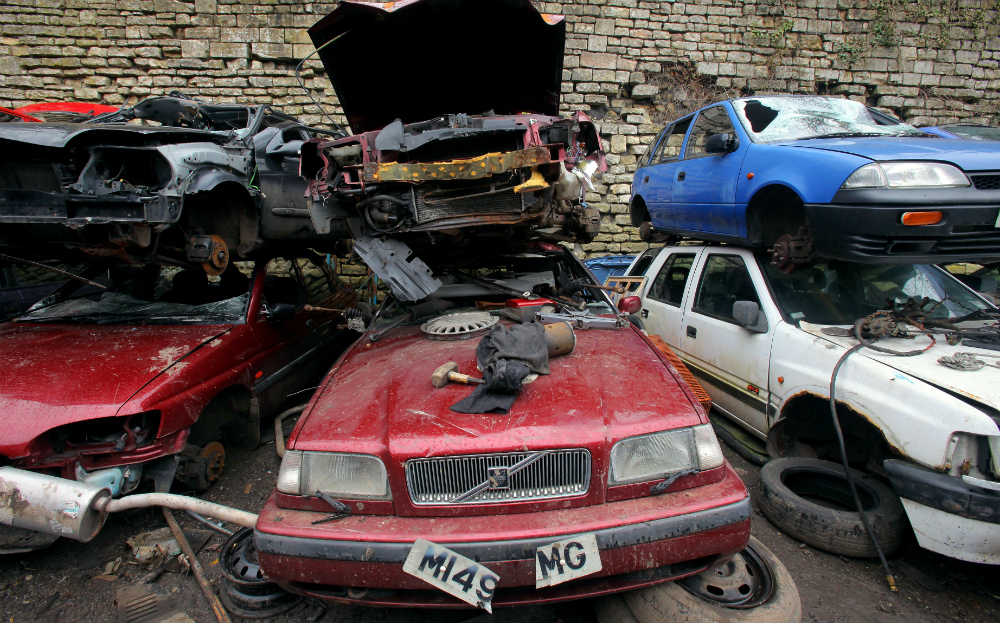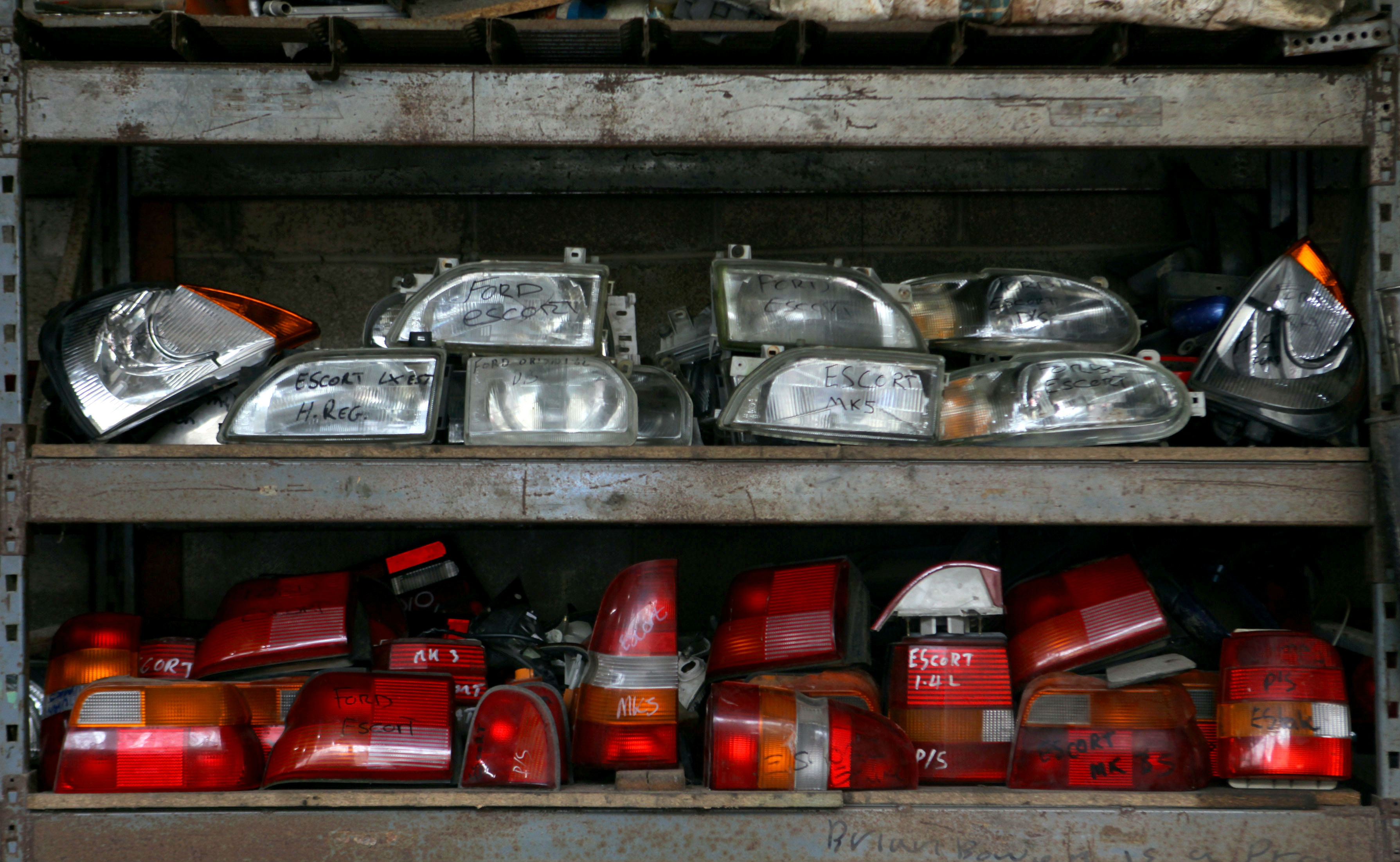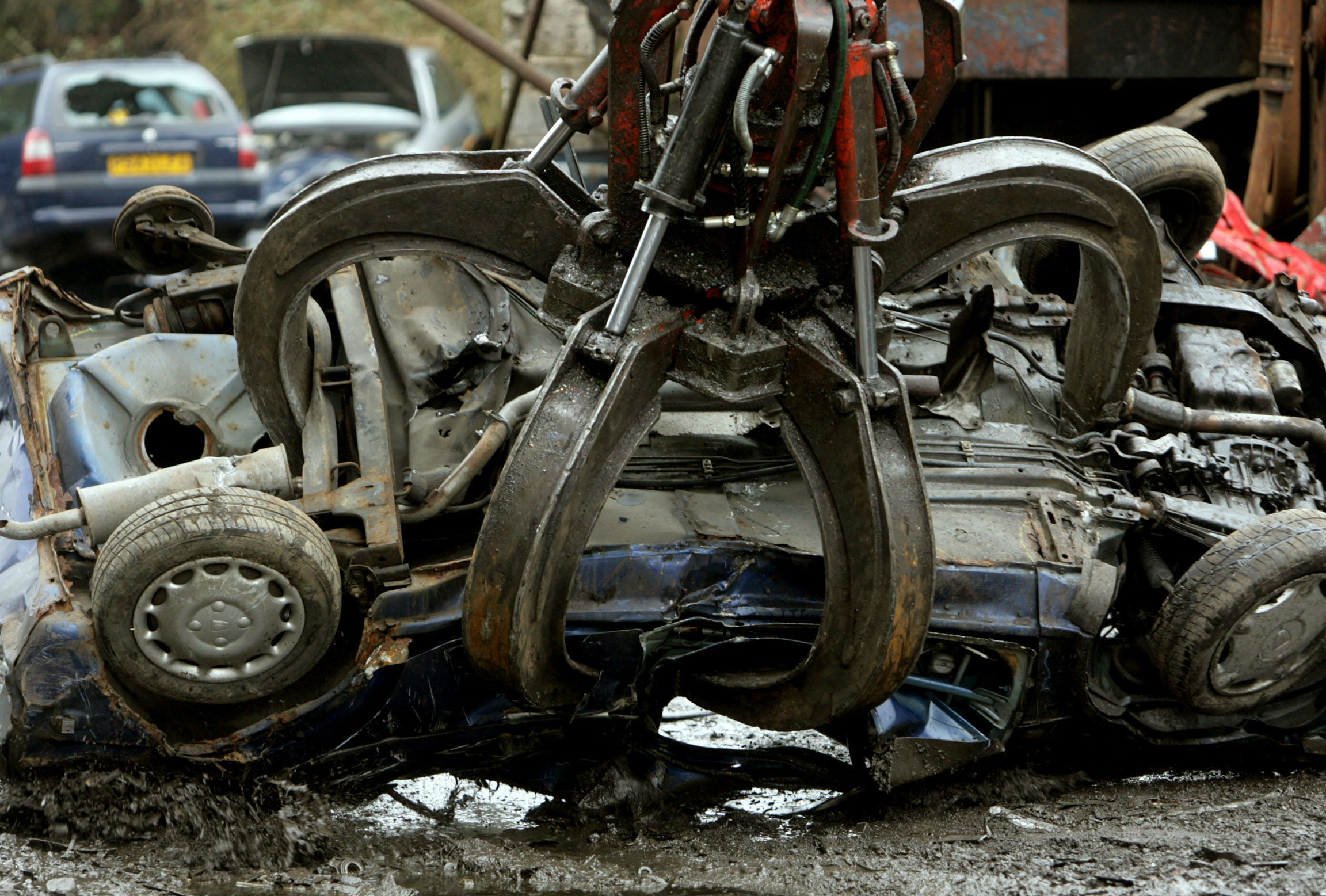Advice: How to scrap your car
Everything you need to know to recycle your car

BRITAIN’S CAR market is firing on all cylinders again, recording a 10-year high of 2.47m new car sales in 2014. Every day, thousands of drivers collect the keys to cars of all shapes and sizes and take a moment to savour that new-car smell and clutter-free cabin.
Search for and buy your next car on driving.co.uk
But what happens to the choked-up clunkers, bald-tyred bangers and the worn out workhorses?
The new year often spells the end of the road for thousands of cars. Winter weather exacerbates mechanical problems and with old cars that aren’t worth a great deal of money, the cost of repair is often more than the value of the car. Combine that with tight household budgets post-Christmas and many drivers make the decision to turn their car to scrap.
Just over one million cars are sent to the crusher each year in the UK, or to put it in to EU-speak, are subjected to recycling and energy recovery as part of the End of Life Vehicle Directive (ELV).
British drivers no longer need to pay to scrap their car – in fact they can make a tidy sum of money
The ELV was introduced in Europe in 2000, and the UK in 2005, in a bid to tackle the scrap heap of old cars that was piling high to the tune of 8m tons a year. Before then, drivers typically had to pay to scrap their car as the price of scrap metal was so low, leading to about 350,000 cars being abandoned each year.
The ELV places the financial responsibility for recycling a car with the vehicle manufacturer, and means British drivers no longer need to pay to scrap their car – in fact they can make a tidy sum of money out of a car that’s literally fit for the scrap heap. Here’s how…
How to scrap your car, step 1: Find an Authorised Treatment Facility
“An Authorised Treatment Facility meets the necessary standards required to hold a licence to recycle vehicles,” says Alison Price of cartakeback.com. You can find an ATF yourself, or choose to let a company such as cartakeback.com take care of the process, and it’s at an ATF where 95% (as of 2015) of a car’s components will be recycled.
Like other reputable recycling firms, such as rewardingrecycling.co.uk, sellyourjamjar.co.uk and removemycar.co.uk, cartakeback.com handles all stages involved in scrapping a car, including putting vehicle owners in contact with their nearest ATF. At the end of the process, the vehicle owner will be paid and issued with a Certificate of Destruction (COD) for confirming the car has been scrapped according to all regulations.
How to scrap your car, step 2: Shop around
Scrapping a car is like selling a car, in as much as you wouldn’t accept the first offer on the table. So shop around, as you might be able to get a better price for your car from one ATF compared with another.
Shop around, as you might be able to get a better price for your car from one ATF compared with another
A typical family saloon car will be worth more than £150; some rare cars will be more sought after by dismantlers, as their spare parts are valuable, so these may be dismantled for sale and will be worth more than £300.
How to scrap your car, step 3: Do your bit for charity
Fancy giving something back to charidee? There are not-for-profit car donation schemes which turn your old car into cash for any UK charity. Giveacar.co.uk, charitycar.co.uk and even Oxfam will gladly accept your worn-out motor and do some good with the hunk of junk that’s spoiling your neighbours’ view.
How to scrap your car, step 4: Collection or delivery?
There’s more than a difference in convenience between having the car collected from your home and delivering it in person to an ATF. If you opt for the convenience of the former, you’ll be paid less – by as much as approximately £40.
How to scrap your car, step 5: Dig out the vehicle’s V5C paperwork
As the keeper of the vehicle, you’ll need to notify the Driver and Vehicle Licensing Agency (DVLA) that you sold or transferred the car to a dismantler. Fail to do so and you’ll remain liable for tax and traffic offences. So dig out the vehicle’s V5C paperwork, which shows who is responsible for registering and taxing a vehicle, and see section nine.
Fail to notify the DVLA and you’ll remain liable for tax and traffic offences
Regardless of whether you are dealing directly with an ATF or using an agent, the safest approach is that you take responsibility for sending the form to the DVLA, after adding the ATF agent’s details.
How to scrap your car, step 6: Take care of your personal data
When handing over your car, you’ll need to prove your identity, using the likes of a photo-card driving licence and also a proof of address, such as a utility bill.
A reputable company should ensure that all personal data is encrypted
These documents are copied and the information stored for three years, so ensure you are dealing with a reputable company which won’t misuse your personal data. “A reputable company should ensure that all personal data is encrypted,” warns Alison Price of cartakeback.com.
How to scrap your car, step 7: Never accept cash for payment
In England and Wales (not Scotland) it is illegal to pay cash for scrap metal. This follows the introduction of the Scrap Metal Dealers’ Act, in October, 2013, which aims to prevent the trade of stolen scrap metal. Instead, you must choose between three payment options – Faster Payments, BACS bank transfer or PayPal.
How to scrap your car, step 8: Inform your insurer
If your car remains insured beyond the point of handing it over to the shredder, then notify your insurer that it has been disposed of and they will refund you any outstanding balance or cancel any direct debit payments.
How to scrap your car, step 9: Keep your Certificate of Destruction

Within seven days of handing over your car to an ATF, the DVLA will send out a Certificate of Destruction, which should be kept safe.
Search for and buy your next car on driving.co.uk





